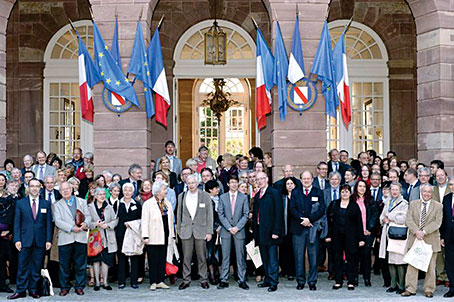ESF regroups
DOI: 10.1063/PT.3.2651
The European Science Foundation is not dead, despite close calls in recent years and reports to that effect over the past months. Instead, in late November the member delegates decided to reconfigure ESF into a leaner, cost-recovering, service-oriented organization.
Based in Strasbourg, France, ESF was founded in 1974 to facilitate research across Europe. Its 66 members from 29 European countries are national funding agencies, research institutions, and learned societies. The foundation helped create many successful programs and policy initiatives; examples are the European Young Investigators Program and Exploratory Workshops on emerging areas of research. (Photo is from last year’s 40th anniversary celebration.)

ESF © BENOÎT LINDER

The new incarnation of ESF has shed its policymaking and research-funding activities so as not to compete with the newer Science Europe, whose membership and mandate overlap with ESF’s. In the lead-up to the November decision, for example, the Cooperation in Science and Technology program, which funds meetings, training, and other interactions among scientists, peeled off from ESF to become an independent organization.
ESF will now focus on selling services, namely program management, peer review, and evaluation; clients include national funding agencies, corporate social responsibility funds, and not-for-profit entities. As examples, ESF will continue to coordinate MERIL, an inventory of European research infrastructures, and provide management support for the European Commission’s flagship graphene initiative (see Physics Today, December 2013, page 22
The new scheme is still subject to a financial “viability test,” says ESF chief executive Martin Hynes. The organization’s name will also be revisited.
More about the Authors
Toni Feder. tfeder@aip.org
